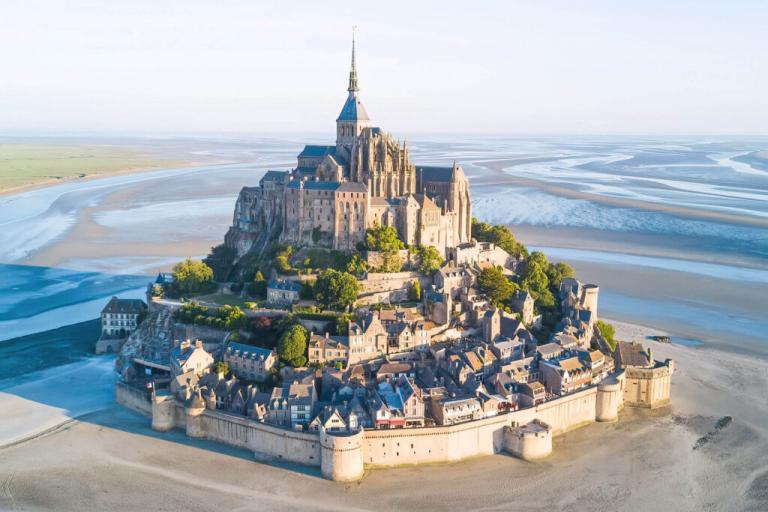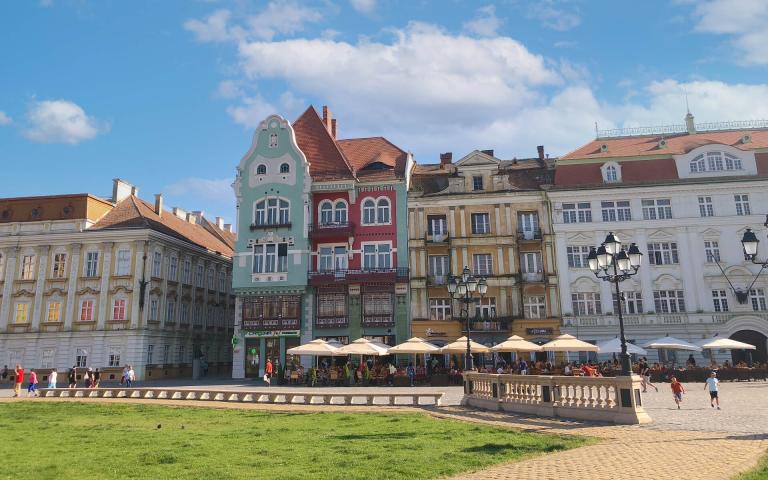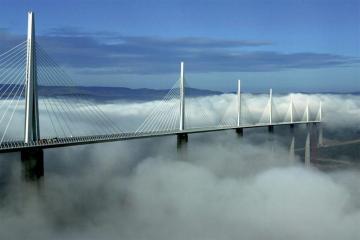Home France is recognized for its significant cultural heritage, exceptional cuisine, and attractive landscapes, making it the most visited country in the world. From seeing…


Timișoara, located in Western Romania, is the capital of Timiș County and the principal economic, social, and cultural center of the Banat area. With a population of 250,849 as of the 2021 census, it is Romania’s fifth most populated city. The city’s strategic location on the Bega River has contributed to its historical importance and current prominence. Timișoara’s metropolitan area is home to around 400,000 people, while the larger Timișoara-Arad metropolis includes more than 70% of the population of Timiș and Arad counties.
The rich heritage of the city is reflected in its intricate cultural tapestry, which comprises 18 religious faiths and 21 ethnic groups living in harmony. This cosmopolitan character has been created by several historical influences, including sizable populations of Swabian Germans, Jews, and Hungarians who make up 6% of the present population. Timișoara’s Austrian triumph against the Ottoman Turks in 1716 marked a turning point in the city’s history and set off a decades-long period of modernization and expansion.
Timișoara developed behind fortifications in the 18th and 19th centuries; urban growth sprang from these defensive structures. The walls of the city started to lose strategic importance as military technology developed in the second part of the nineteenth century. This action led to the destruction of military bases and bastions, opening the path for new boulevards and neighborhoods building the contemporary cityscape.
Timișoara has traditionally led in regional social and technical development. Notably, it is the first European city to be lit by electric street lamps in 1884 and the first city in the Habsburg monarchy to adopt street lighting in 1760. To show its commitment to public welfare and education, the city built a municipal hospital and the first public lending library in the Habsburg monarchy more than two decades before Vienna. By publishing the Temeswarer Nachrichten, the first daily in German for Southeast Europe, Timișoara also developed a name for itself in journalism.
Timișoara’s progressive attitude spread into politics, and the city is now very important in modern Romanian history. It turned into the epicenter of the Romanian Revolution in December 1989, launching a movement that would bring about significant political and social transformations all throughout the nation.
Timișoara’s identification has always revolved mostly on education. Six universities spread around the city teach over 40,000 students. This strong intellectual environment has encouraged brilliance in many different fields as well as invention. Having several revolutionary successes in Romanian medicine, Timișoara has established a name in the medical field. Among these are the first in vitro conception, first laser heart surgery, and first stem cell transplant performed in the nation.
Apart from scientific developments, Timișoara has become a key center of technology. Comprising one of Romania’s most strong IT industries, the city rivals those of other cities including Bucharest, Cluj-Napoca, Iași, and Brașov. 2013 saw Timișoara’s recognition as having the fastest internet download speed globally, therefore attesting to the world-class nature of its digital infrastructure.
Timișoara’s appeal goes beyond her academic and scientific successes. Reflecting its architectural beauty and wealth of natural areas, the city is sometimes nicknamed as “Little Vienna” or the “City of Roses.” With 36 parks and many historical places, Timișoara offers a special mix of natural beauty and cultural legacy for locals as well as guests. Included on the Art Nouveau European Route, the city’s dedication to preserving its historical character while embracing modernism is seen in places including Oradea.
With spa resorts like Buziaș and Băile Călacea situated 30 kilometers from the city center, the surrounding countryside accentuates Timișoara’s appeal. Known for their medicinal waters since Roman times, these resorts provide additional leisure and wellness activities for residents as well as guests.
With three state theatres, an opera house, a philharmonic orchestra, and many more cultural organisations, Timișoara boasts a lively and varied cultural landscape. This rich cultural environment helped the city be named the first Romanian Youth Capital in 2016. When Timișoara was awarded a European Capital of Culture in 2023, sharing the sought-after title with Veszprém in Hungary and Elefsina in Greece, its cultural relevance peaked.
Currency
Founded
Calling code
Population
Area
Official language
Elevation
Time zone
Sângeorz-Băi is a charming spa resort and town located in the gorgeous mountain region of Bistrița-Năsăud County in Transylvania, Romania. This little town presents a mix of natural beauty and…
Voineasa, an idyllic commune located in Vâlcea County, Oltenia, Romania, has a population that flourishes among the scenic splendor of the Carpathian Mountains. Comprising three villages - Valea Măceșului, Voineasa,…
Eforie, a scenic city located in Constanța County, Dobrogea, Romania, has a population of 9,473 according to the 2011 census. Comprising Eforie Nord and Eforie Sud, this little coastal town…
Călimănești, sometimes known as Călimănești-Căciulata, is a scenic town located in southern Romania, notably in Vâlcea County. Nestled in Oltenia's historical area, this little town enjoys a commanding northern end…
Borsec, a beautiful town in Harghita County, Transylvania, Romania, has a population of 2,585, the majority of whom are ethnic Hungarians, mainly Szeklers. This small village, well-known for its spas…
Băile Tușnad, a picturesque town nestled in the eastern Transylvanian region of Romania, boasts a population of 1,372 as of 2021, making it the smallest town in the country by…
Băile Herculane, a spa town located in the Cerna River valley of Romanian Banat, has a current population of 3,787 people. Perched between the Mehedinți Mountains to the east and…
Băile Govora, located in Vâlcea County, Romania, is a spa town notable for its historical significance and therapeutic properties. Situated west of the Olt River and some 20 kilometers southwest…
Băile Felix, located in the Sânmartin commune of Bihor County, Romania, is recognized as the largest permanent spa resort in the country, supported by its resident population. Situated around 10…
The people of Amara, a small town on the Bărăganului Plain in the Romanian region of Muntenia, Ialomița County, enjoy a prime location. Both the hamlet of Amara and the…
Bucharest, Romania's capital and largest city, is a thriving metropolis with an estimated 1.76 million people living within its borders. Located on the banks of the River Dâmbovița in southeast…
Constanța, located on Romania's Black Sea coast, is the country's fourth-largest city and the primary port in the region. Serving as the capital of Constanța County and a major urban…
Cluj-Napoca, located in northern Romania, is the country's second-largest city and the capital of Cluj County. Nestled in the Someșul Mic river valley and covering an area of 179.52 square…
Transylvania, a historical and cultural region of Central Europe, is located in central Romania. Its land size is about 100,000 square kilometers, and its population is roughly 6.5 million. Natural…
Sibiu, a charming city in Transylvania, Romania, has a population of 134,309 as of the 2021 census, making it the country's 15th largest city. Rich in history and culture, this…
Iași, Romania's third-largest city and the headquarters of Iași County, is located in the historical region of Moldavia. With a population of 271,692 as of the 2021 census, Iași is…
Home France is recognized for its significant cultural heritage, exceptional cuisine, and attractive landscapes, making it the most visited country in the world. From seeing…

From Rio's samba spectacle to Venice's masked elegance, explore 10 unique festivals that showcase human creativity, cultural diversity, and the universal spirit of celebration. Uncover…

Millions of visitors come to Spain annually because of its vibrant culture, fascinating past, and amazing scenery. Still, the real spirit of Spain is found…

Discover the vibrant nightlife scenes of Europe's most fascinating cities and travel to remember-able destinations! From the vibrant beauty of London to the thrilling energy…

The 7 Wonders of the 21st Century feature amazing successes redefining human creativity and engineering capability. From the calm Temple of Buddha's Origin in Leshan,…

© All Rights Reserved. By Travel S Helper